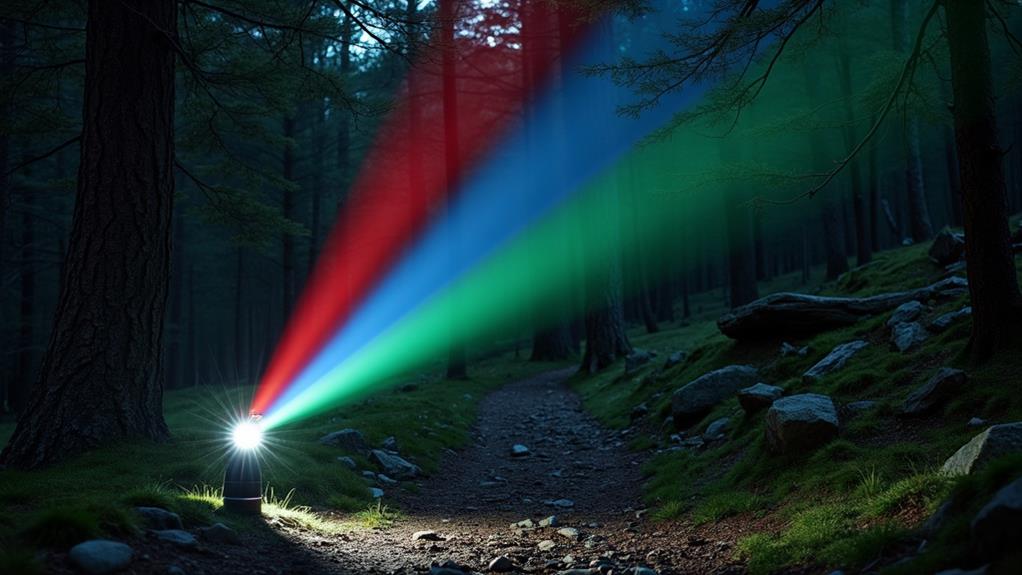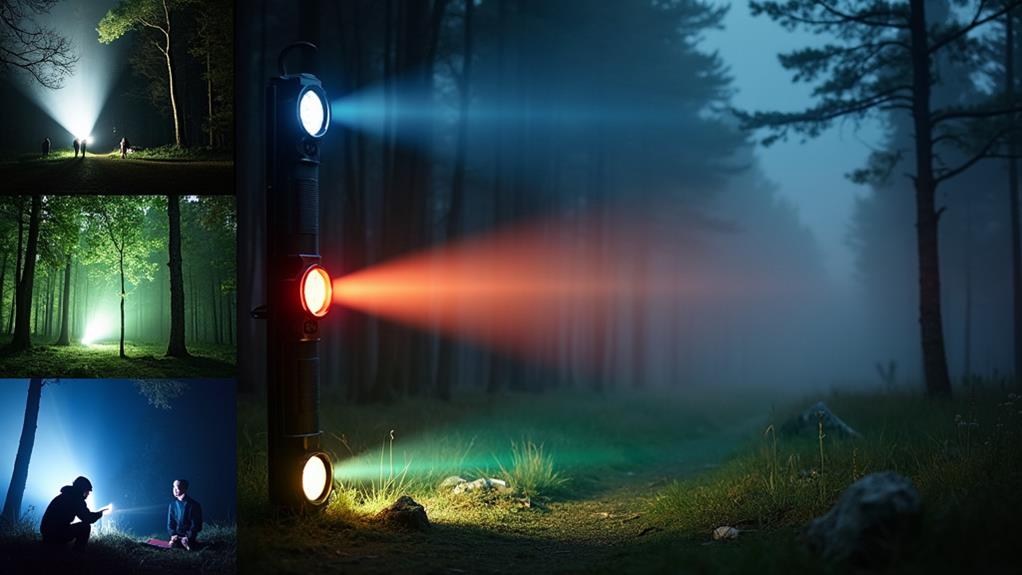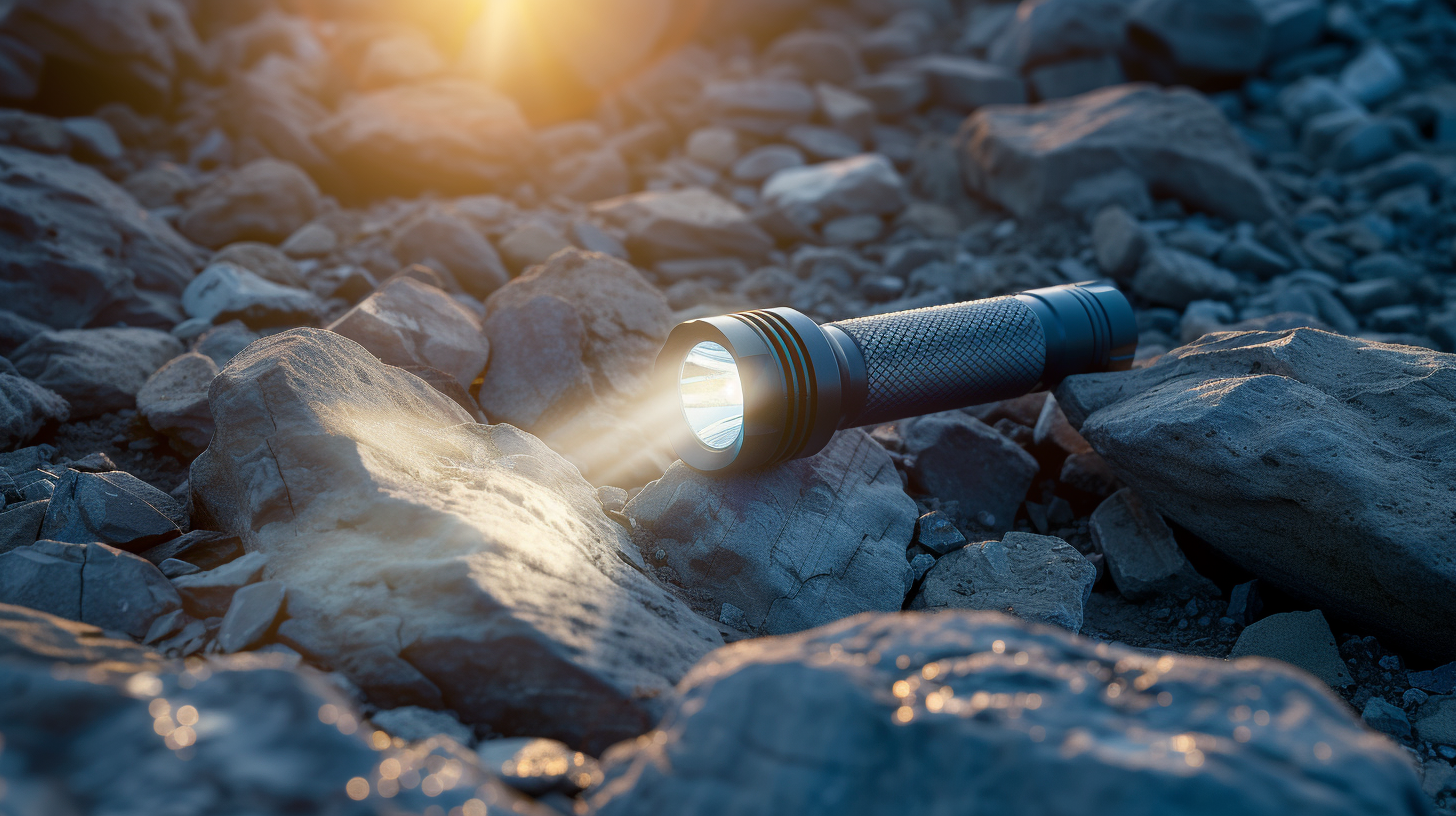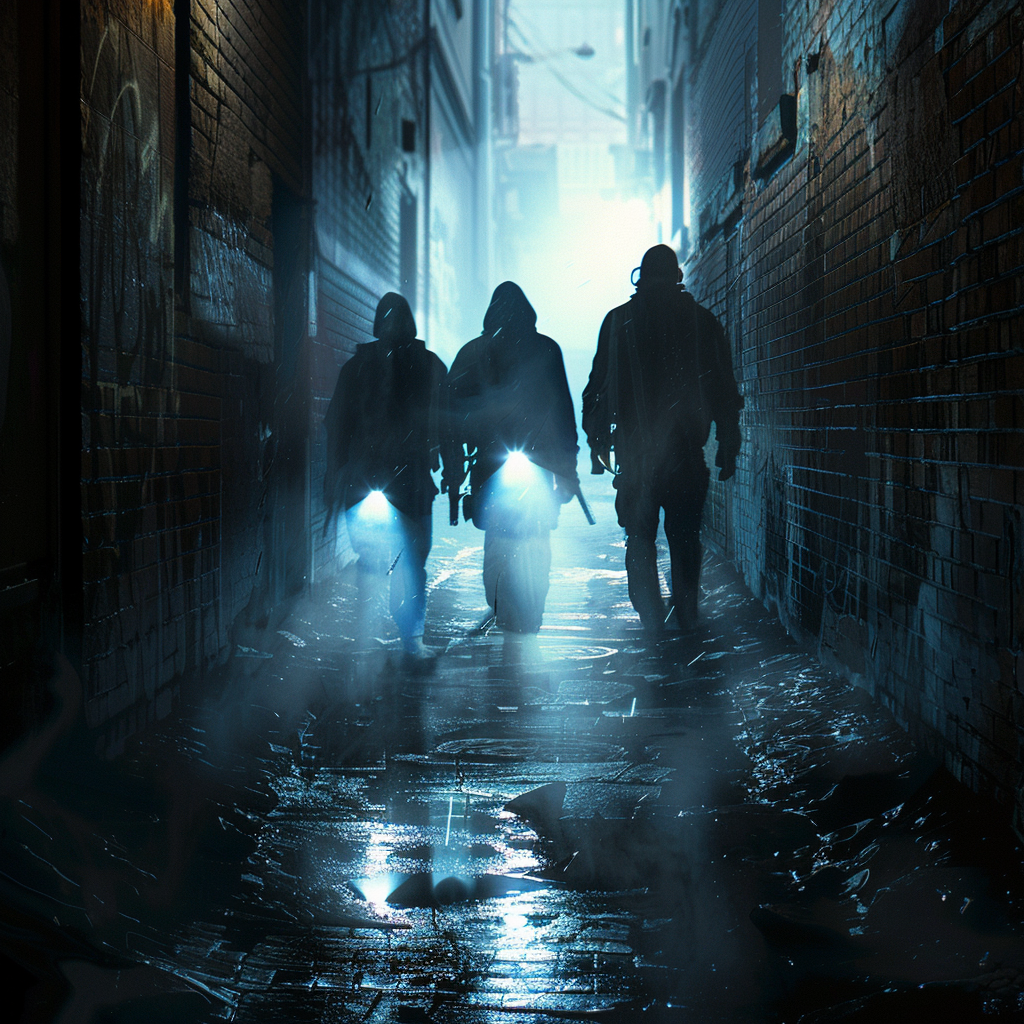What Is the Best Color for a Flashlight?

When choosing the best color for a flashlight, it's essential to consider its intended use. While bright white light is often perceived as the default choice, different colors offer unique benefits. Red light is ideal for preserving night vision during nighttime activities. Green light is less likely to spook wildlife, making it suitable for outdoor adventures. Neutral white light provides versatility, balancing comfort and clarity for various tasks. Understanding these nuances can help you select the most appropriate flashlight color for your specific needs.
Understanding Color Temperature

Understanding color temperature is vital when selecting the best flashlight for your needs. Color temperature, measured in Kelvin (K), describes the hue of light emitted from a source. It spans from warm (2700K-3500K) to cool (5000K and above). Warmer temperatures, typically between 2700K and 3000K, emit a warm white light that creates a cozy atmosphere, making them ideal for nighttime use when a soothing, less intense light is preferred.
For general-purpose flashlights, a color temperature around 4000K to 4500K offers a balance. This range provides a mix of warm and cool light, suitable for various activities. Whether you're reading a map or navigating a dark trail, this middle-ground temperature ensures adequate visibility without being too harsh or too dim.
Be cautious with higher color temperatures (6500K and above), as these can appear harsh and are generally less favored for everyday use. However, they are beneficial for tasks that require intense cool light. Ultimately, understanding and choosing the right color temperature can significantly impact your mood and the effectiveness of your flashlight. Consider your specific needs and preferences to make an informed decision.
Warm Vs. Cool Light
When selecting a flashlight, the choice between warm and cool light can significantly impact your experience. Warm light, with color temperatures between 2700K and 3500K, provides a yellow/orange hue. This type of light improves visibility in low-light conditions and creates a cozy atmosphere, making it ideal for nighttime activities. It reduces glare and enhances comfort, allowing you to see better without straining your eyes.
In contrast, cool light, characterized by color temperatures above 5000K, emits a bluish/whitish glow. It's perfect for focusing on distant objects and increasing clarity in detailed tasks. Cool light is favored for daytime use and tasks requiring high visibility, as it promotes alertness and enhances task performance.
| Warm Light | Cool Light |
|---|---|
| 2700K to 3500K | Above 5000K |
| Yellow/orange hue | Bluish/whitish glow |
| Reduces glare and eye strain | Enhances clarity and alertness |
Your personal preferences will play a significant role in your choice. Many users prefer a neutral temperature around 4000K for versatile applications that balance both warmth and coolness. This middle ground can cater to a wide range of activities, from cozy nighttime reading to detailed daytime tasks.
Impact on Night Vision

In low-light conditions, the color of your flashlight can significantly impact your night vision. Red light minimally affects your night vision because your eyes are less sensitive to red wavelengths. This allows you to see contrasts and details better in the dark, making it ideal for activities like reading maps or checking gear without compromising your night adaptation.
Green light provides soft illumination that doesn't attract insects and is less disruptive to night vision compared to blue light. It's excellent for outdoor activities like hiking or hunting, offering a balance between visibility and preserving your natural night vision. Green light also enhances contrast and clarity, aiding navigation through dark environments.
While blue light can improve detail and readability, it disrupts night vision more than red or green light. Therefore, red or green light is generally preferable for maintaining your night vision. Warmer color temperatures (2700K-3000K) also improve visual comfort without significantly affecting your ability to see in low light. By choosing red or green light, you can effectively preserve your night vision, making nighttime activities safer and more efficient.
User Preferences
When selecting a flashlight, your preference for color temperature may vary based on the situation. For general use, a balanced range of 4000K to 4500K is effective. Warmer tones, around 2700K to 3000K, provide a cozier feel, while cooler temperatures, ranging from 5000K to 5700K, are suitable for outdoor activities. Your personal experiences and specific needs will ultimately guide your choice.
Warm Vs. Cool Preferences
Users' preferences for flashlight color temperatures often depend on the specific context and activities they're engaged in. If you enjoy cozy, comfortable lighting, you might prefer warm color temperatures (2700K-3000K). These are ideal for nighttime activities, creating a soothing ambiance that helps you relax. On the other hand, neutral white options (4000K-5500K) offer a balanced mix of warmth and clarity, making them perfect for tasks and work environments where visibility is crucial.
Different scenarios call for different color temperatures. Here's a quick comparison to help you decide:
| Activity/Scenario | Preferred Color Temperature |
|---|---|
| Reading before bed | Warm (2700K-3000K) |
| Working in a workshop | Neutral White (4000K-5500K) |
| Outdoor camping at night | Warm (2700K-3000K) |
| Daytime outdoor activities | Neutral White (4000K-5500K) |
| Emergency situations | Neutral White (4000K-5500K) |
Personal preferences can vary. Some users might develop a liking for specific tints based on past experiences or the particular environments they use them in. The perception of brightness and mood is influenced by the chosen color temperature, so select the one that best aligns with your needs.
Ideal Color Temperatures
Understanding user preferences for warm and cool tones is essential when selecting the ideal color temperature for LED flashlights. Users typically favor color temperatures between 4000K and 4500K, as this range offers a balanced mix of warm and cool tones, making it suitable for a variety of tasks.
For nighttime activities, a warmer color temperature around 2700K is recommended. This setting creates a cozy atmosphere and reduces the attraction of insects, making it ideal for camping or late-night reading. Conversely, for daytime use or work environments, opt for color temperatures between 5000K and 5700K. These settings mimic natural sunlight, improving visual clarity and reducing eye strain.
Many users also appreciate mixed tints that blend warm and neutral tones. This feature allows the LED flashlight to adapt to ambient lighting conditions, enhancing comfort and versatility. However, cooler temperatures above 6500K should be used cautiously. They can appear harsh and are generally less preferred for everyday use, being more suitable for specialized applications.
Task-Specific Lighting

When selecting the optimal flashlight color for specific tasks, consider the lighting environment. For work settings, a color temperature between 4000K and 4500K provides a balanced mix of warmth and coolness. For nighttime navigation, a warmer light between 2700K and 3000K enhances comfort and reduces glare.
Optimal Work Environment Lighting
Choosing the right lighting for detailed tasks is crucial for enhancing visibility and reducing eye strain. For tasks requiring precision, opt for color temperatures between 4000K and 4500K, which offer balanced light ideal for seeing fine details clearly. For environments demanding high accuracy, select lighting with a High CRI (Color Rendering Index) of 90 or above to ensure colors are rendered accurately, essential for activities like painting or makeup application.
For work that demands clarity during the day, use color temperatures between 5700K and 6500K. These cooler light sources mimic natural daylight, helping you maintain focus and peak performance. Conversely, for relaxed environments or evening work, warmer color temperatures between 2700K and 3000K can enhance comfort and reduce eye strain over extended periods.
Tailoring your lighting to your specific needs by choosing the appropriate color temperature and ensuring a High CRI can significantly enhance your work environment, promoting productivity and precision.
Nighttime Navigation Choices
Navigating at night demands careful lighting choices to ensure both safety and efficiency. Red light is the preferred option for nighttime activities. It preserves night vision and minimizes environmental disruption, making it ideal for tasks like map reading or moving stealthily. This allows you to remain aware of your surroundings without compromising your ability to see in the dark.
Green light, though slightly more disruptive to night vision than red, offers specific advantages for outdoor activities such as hunting or fishing. It doesn't attract insects and is less detectable by animals, helping you stay inconspicuous. This makes green light a strong choice when you need good visibility without drawing attention to yourself.
While blue light can enhance detail visibility in low-light conditions, it is more detrimental to night vision compared to red or green light. For scenarios requiring different lighting needs, flashlights with adjustable color temperatures are invaluable. They allow you to switch between warm and cool light, providing flexibility to adapt to various nighttime tasks and visibility requirements.
Technical Considerations
Choosing the best color for a flashlight requires understanding several technical considerations that directly impact its performance. One primary factor is color temperature, which depends on the intended use of the flashlight. Warmer light sources (2700K-3000K) create a cozy atmosphere, ideal for relaxed environments. In contrast, cooler light sources (5000K-5500K) are better for tasks requiring clarity and precision, especially during daylight hours.
Luminous intensity and flux are also important attributes to consider. These determine the flashlight's brightness and range, which should be balanced with the appropriate color temperature to avoid eye strain.
Key considerations when choosing a flashlight include:
- Color temperature: Warmer (2700K-3000K) for comfort, cooler (5000K-5500K) for clarity.
- Luminous intensity and flux: Ensure the light is bright enough for your needs without causing discomfort.
- Application needs: Different tasks require different light characteristics.
Color Rendering Index (CRI)

The Color Rendering Index (CRI) of a flashlight significantly affects its ability to reproduce colors accurately, compared to natural light. CRI is a measure of how well a light source can render colors faithfully, with higher values indicating better color fidelity. A CRI score of 90 or above is considered excellent, making it suitable for tasks that demand precise color differentiation, such as photography, art, and medical applications.
When selecting a flashlight, the importance of CRI cannot be overstated, especially in scenarios where accurate color perception is critical. A high CRI improves detail visibility and enhances the overall lighting effectiveness. However, it's also crucial to consider the color temperature, as optimal performance often results from balancing both CRI and color temperature.
For general-purpose flashlights, many users prioritize CRI over color temperature because a higher CRI offers a more natural and pleasing color representation, enriching the user experience. Therefore, if you need a flashlight with superior color accuracy, choose one with a high CRI. This choice will significantly improve how you perceive your surroundings.
Applications of White Light
White light, especially within the 4000K to 5500K range, is ideal for a wide array of tasks due to its adaptability. It is suitable for both indoor and outdoor applications, providing reliable general illumination. Moreover, white LEDs are cost-effective, widely available, and offer optimal brightness and clarity, making them a dependable choice for any lighting need.
Versatile Everyday Illumination
Versatile Everyday Illumination
White LEDs, typically ranging from 4000K to 5500K, provide versatile illumination suitable for various everyday tasks. Mimicking natural daylight, these LEDs improve visibility and reduce eye strain during extended use. Ideal for detailed work like reading, crafting, or routine household chores, white LEDs ensure accurate color rendering and minimized shadows, enhancing task efficiency.
For a range of activities, white light is a reliable option:
- Household tasks: Whether fixing something under the sink or organizing your closet, white light ensures clear visibility.
- Outdoor activities: Planning a camping trip? White LEDs illuminate your campsite, enhancing safety and ease of navigation.
- Emergency situations: During power outages or emergencies, white light helps you assess your surroundings and move safely.
White light's broad usability makes it an invaluable tool for everyday illumination needs, offering versatility and effectiveness in diverse scenarios.
Indoor and Outdoor Utility
When selecting the best color temperature for a flashlight, understanding its utility for both indoor and outdoor use is crucial.
Indoors, a flashlight with a color temperature between 2700K and 3000K provides a warm light that creates a cozy atmosphere, ideal for living spaces and relaxation. For tasks such as reading or working, a neutral white light at around 4000K offers a balance of warmth and clarity, making it versatile for various activities.
Outdoors, the requirements shift. A cooler white light (5000K to 5700K) mimics daylight, enhancing visibility and detail for activities like camping, hiking, or during emergencies. This type of light improves long-distance viewing, which is essential in low-light conditions. In foggy or rainy conditions, a warmer light (2700K to 3500K) improves depth perception and reduces glare, aiding in better navigation.
Advancements in flashlight technology allow for customized lighting to meet specific needs. Cooler temperatures are beneficial for distance viewing, while warmer tones enhance comfort during close-range tasks. Choosing the appropriate color temperature can significantly improve your overall experience, both indoors and outdoors.
Cost-Effective Lighting Solution
Have you ever wondered why white light LEDs are the preferred choice for everyday illumination? It's because they are highly versatile and practical. White light LEDs offer clear, bright illumination, making them ideal for a variety of tasks and environments. Whether you are reading, working on a project, or navigating low-light conditions, white light enhances visibility and detail, reducing eye strain and improving overall task performance.
One of the primary advantages of white light LEDs is their cost-effectiveness. They are widely available and popular for both indoor and outdoor use, providing an economical solution for general lighting needs. Found in household light bulbs and portable flashlights alike, they offer a reliable and energy-efficient lighting option.
Here are a few reasons why white light LEDs are a smart choice:
- Versatility: Suitable for various tasks and environments.
- Cost-effective: Economical for both indoor and outdoor applications.
- Enhanced visibility: Improves detail and reduces eye strain.
Moreover, white light comes in different color temperatures, from warm (around 3000K) to cool (up to 6500K), allowing you to choose the ideal lighting based on your specific needs and preferences. This flexibility makes white light LEDs an excellent cost-effective lighting solution.
Specialty Colors: Red, Blue, Green

Specialty colors such as red, blue, and green offer distinct advantages over traditional white light for various activities.
Red light is ideal for preserving night vision, making it suitable for maneuvering in the dark without disturbing others or losing your night adaptation. Red LEDs are particularly effective in military and outdoor settings, as they improve contrast in low-light situations.
Blue light, with a wavelength of 470 nm, excels at revealing details in low-light conditions. It is ideal for reading maps or detecting bodily fluids, making it valuable for crime scene investigations. Blue light helps you see fine details that might be missed with other colors.
Green light, with a 525 nm wavelength, is beneficial for outdoor activities. It attracts wildlife without scaring them, making it a preferred choice for hunters and fishermen. Additionally, green LEDs offer longer run times compared to other colored LEDs, making them efficient for prolonged activities like night hunting and tracking.
Choosing the Right Flashlight
Selecting the right flashlight hinges on understanding your specific needs and the environments you'll be traversing. The initial step is to evaluate the color temperature. A warm light (2700K-3500K) is ideal for low-visibility conditions, providing a comfortable glow without overwhelming your eyes. Conversely, cooler light (5000K-6500K) excels at distance viewing and detail recognition, making it great for spotting objects from afar.
A neutral white light around 4000K offers a balanced solution for general tasks, making it highly versatile. You'll also want to assess the Color Rendering Index (CRI). Higher CRI values (90+) are essential for tasks requiring accurate color representation, such as photography or makeup application.
For specific outdoor activities, different light colors offer distinct advantages:
- Red light: Preserves night vision and avoids startling wildlife, perfect for nighttime navigation.
- Blue light: Effective for reading maps and detecting bodily fluids, useful in emergency or investigative situations.
- Green light: Minimizes impact on animal reactions, making it ideal for hunting.
Ultimately, your flashlight's color should align with your intended use, ensuring you get the best performance in any given situation.




